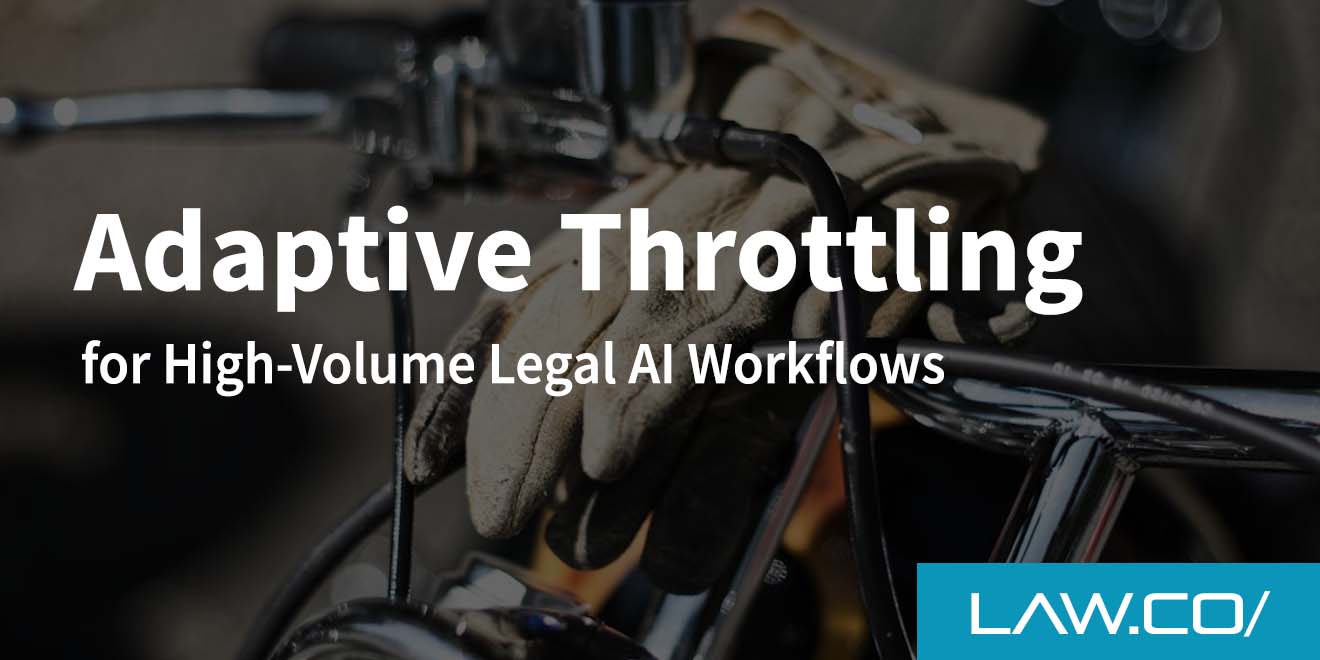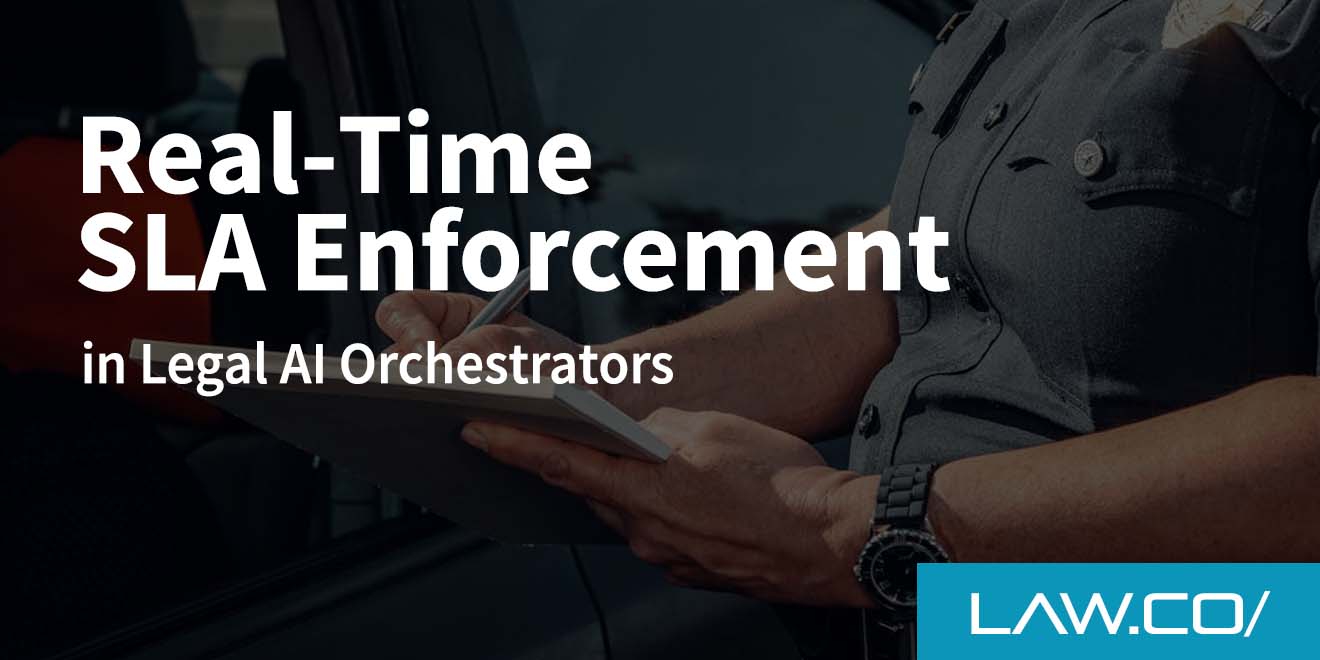

Safeguarding Law Firm and Client Data in AI Applications
Data security is an important concern for any organization using artificial intelligence (AI) applications. AI, while offering a variety of desirable benefits, also presents unique security risks.Unfortunately, evaluating and managing data security risks are often low on the priority list when it comes to the development of AI systems.This guide provides an overview of various steps organizations need to take in order to protect firm and customer data within settings where AI is used.It outlines best practices in non-functional areas that should be adopted to ensure sufficient safeguards for all concerned stakeholders while leveraging the capabilities offered by AI in a secure manner.
Understanding AI and Data Security

Brief explanation of AI and its applications
AI (Artificial Intelligence) is the technology that enables machines and computers to learn, reason, and act like humans.AI is used in a wide range of applications such as robotics, automation, natural language processing (NLP), virtual personal assistants (VPA), chat bots, and automated decision-making systems across various industries such as finance, healthcare, retail, manufacturing etc.While these opportunities enable organizations to drive innovation faster than ever before they also come with data protection risks associated with collecting, storing, and sharing data in order to make decisions or offer recommendations.
Risks and challenges associated with AI and data security
As AI gains increasingly widespread usage, the risks and challenges of data security become a key issue. Primarily, that information must be secure throughout exploration, processing, storing and sharing has never been more important.When humans become more involved it also adds a layer of complexity to this matter as ethical considerations can come into play.Data provision should always be appropriate and verified where necessary. Additionally, an AI system’s decision outcomes must remain consistent among multiple trials with different inputs tailored from original factors- such as ownership limits or confidentiality marks on info provided for analysis; raising alertness to potential privacy issues and compliance risk when shared records are transmitted in any circumstances if rectify unknown corruptions occurred.
Legal and ethical considerations in data protection
Legal and ethical considerations are key when it comes to data security in AI applications. Organizations must understand the applicable regulations, maintain compliance with data protection standards, and act in accordance with principles and best practices of cyber security.Consent should be obtained before collecting personal information about users. Data storage systems should also ensure accuracy, breach notification requirements have been met, confidential data is properly encrypted, and any third-party service providers are compliant with laws (such as GDPR).
Establishing a Secure Infrastructure

Conducting a thorough risk assessment
Conducting a thorough risk assessment is an essential part of establishing a secure infrastructure for AI applications.This actually involves analyzing applicable system components to identify areas of legal, financial, and security risks, such as network access points, system configurations, third-party services used, and authentication methods.After identifying likely sources of risk to data security, appropriate controls can be implemented to minimize the attack surface area. Also, involving stakeholders in this process is recommended since it will prepare them in mitigating these threats.
Implementing robust security protocols and access controls
Implementing robust security protocols and access controls is essential in establishing a secure infrastructure for AI applications. Access control policies such as role-based authorization must be established to limit user privileges.Application-level security measures like two-factor authentication can also be used to ensure that only authenticated users have access to confidential data.System components should also be updated with the latest software patches and system hardening techniques, such as threat modeling or implementing network segmentation practices- may need to be employed where appropriate.
Ensuring physical security of data centers and hardware
When developing a secure infrastructure for AI applications, it is important to ensure the physical security of data centers and hardware. This includes properly securing facilities from outside threats like malicious attackers or environmental disasters.It also means implementing access controls that prevent unauthorized access or tampering with storage and networking equipment. Taking measures such as these helps to mitigate against potential misuse of client data.Physical security should be integrally included in assessing the support and operational needs of any AI-based organization. Implications for budgeting might include maintaining an up-to-date inventory, periodically running penetration tests to identify weaknesses in systems/clusters/sites or external dependencies, and resorting to appropriate trusted third parties specialties for audits if aren't available internally.
Utilizing encryption and secure communication channels
Utilizing encryption and secure communication channels is a critical part of secure infrastructure in AI applications. Encryption involves transforming data into a code so that unauthorized users are unable to read it- while secure communication protocols incorporate authentication processes and other measures to protect transmissions from interception and manipulation.Leveraging virtual private networks (VPNs) is another important step for guaranteeing the integrity of transmitted information. Organizations must choose strong, long passkeys when creating VPN accesses as well as continually assess access logs for suspicious activity.
Protecting Data during Collection and Storage

Implementing data minimization practices
Data minimization, or data reduction is an important element of data security, ensuring that organizations are collecting and storing only the information they absolutely need, to protect themselves and their customers from breach.To implement this measure successfully, organizations must assess which pieces of user data are necessary for their services and restrict access to any irrelevant or sensitive material.Data sent over networks should also be encrypted where possible. Delete/archive immediately unnecessary data such as old accounts no longer in use, and monitor activity logs routinely for anomalies or suspicious behavior.
Applying strong authentication and authorization mechanisms
Applying strong authentication and authorization mechanisms is important to ensure data is collected and stored securely. These processes are needed to help protect against identity theft, malicious access, and unauthorized changes.Authentication usually involves providing proof of identity that verifies an individual or process has permission to access data resources. Authorization involves granting the appropriate privileges after successful authentication.Whenever possible, multi-factor authentication should be used in order to reduce the risk of unauthorized access through brute force attacks or stolen credentials.To enhance authorization best practices further, it’s recommended companies set up a system where users only have rights on specific apps or areas they need privileged access to rather than giving them full administrator similar privileges across all information systems containing client data-related things like their financial records.
Utilizing secure data storage and backup solutions
In order to ensure the utmost protection of data during collection and storage, it is essential to further safeguard it through secure data storage and backup solutions. When collecting data from clients a range of measures should be used in order to ensure sufficient security so as not to cause any compromise or harm to their information.Utilizing secure hosted services such as the cloud is also beneficial since they provide web-based applications which reduce risks arising from hard copies of documents that could easily be stolen.
Secure Data Processing and Model Training

Applying privacy-preserving techniques (e.g., differential privacy)
Applying privacy-preserving techniques (e.g., differential privacy) ensures sensitive information is not revealed when performing data processing or model training tasks using AI applications.Privacy-preserving algorithms add noise to a dataset before the training process begins to reduce risk and ensure data remains anonymous while still preserving accuracy during data analysis or forecasting.In this way, firms can deploy powerful AI techniques without the dangers associated with accessing and releasing users private information.
Utilizing secure computation and federated learning
Secure computation and federated learning are two powerful methods of training AI models while preserving the security of sensitive data. Secure computation is a cryptographic technique which enables data to be securely shared and processed by multiple parties with conflicting interests, without compromising access control or privacy.Federated learning on the other hand leverages distributed datasets from different devices so AI models can be updated in a secure-yet-collaborative manner, ensuring each party’s local data stays encrypted and preserved.This makes it abundantly easier to process massive clusters of private information that must remain confidential while allowing individual participants insight into the collective outcomes generated from model training.
Anonymizing and de-identifying sensitive data
Anonymizing and de-identifying data is an important practice to protect personal or sensitive information.This step removes any unnecessary identifiers such as names, addresses, dates of birth, or employed identifiers from the data before being used for processing and model training.Anonymizing allows organizations to use datasets without invading individuals' privacy yet gain valuable insights. Organizations must take adequate steps to ensure that even after anonymization processes are run, there are no traces in the data which could lead back to individual identities.
Third-Party Services and Partnerships

Assessing the security practices of third-party vendors
When working with a third party, it’s critical to ensure they take security practices seriously and understand the importance of protecting sensitive data.When assessing the security practices of vendors, you should establish what type of encryption protocols are used when communicating any information that could be compromised.Are safeguards such as intrusion detection systems implemented? It is also important to ensure your contract details acceptable usage rules and strategies for dealing with possible emergencies.
Implementing strict data sharing agreements and contracts
It is important to take extra steps when dealing with third-party vendors due to the contractual arrangement of outsourcing services. Third-party services must abide by strict data-sharing agreements and contracts set forth by the firm or client.These contracts are essential as they help specify conditions of any shared data, enabling firms to define who owns collected customer information and how it will be used.It’s important that vendors have read access only, meaning employees possessing knowledge about clients’ confidential information is limited even internally within a partner organization.
Regularly monitoring and auditing third-party activities
Third-party services and partnerships can provide increased access to resources for machine learning initiatives. Businesses must be sure that these partners and providers adhere to their high standards of data security. To guarantee secure operations measures, firms should employ regular monitoring and auditing practices of third-party activities.This could include confirming proper authentication protocols are in place for user credentialing to grant access at a particular tier level as well as ensuring encryption technology is utilized when conversations occur outside of the internal network.Regular verification that malicious code isn’t installed on systems linked with the external partner, or inspection checks into configuration settings must be monitored closely so there is no infiltration risk from unknown source entities in an unsecured environment.
Employee Training and Awareness

Educating employees about data security best practices
Employees should be regularly trained regarding data security best practices to help protect firms’ and their client’s data. During training sessions, staff should learn about the basics of cybersecurity laws, regulations, policies, and processes such as password policies and multi-factor authentication that are integral to keeping information safe.As an additional educational tool, businesses often make use of learning materials like posters, and checklists for resources accessible via mobile devices or desktops for easy reference within day-to-day operations.
Conducting regular training sessions and workshops
Employee training and awareness are essential for safeguarding client and firm data in AI applications. Regular training sessions and workshops should be conducted to inform employees about the relevant tools, techniques, risks, and best practices of data security.Doing so will ensure they are equipped with the knowledge and skills necessary to properly handle sensitive data from AI engineering on up.
Conclusion
Data security in AI applications is a critical function that businesses must prioritize to protect their customers' sensitive data. This comprehensive guide has outlined the basic steps—conducting assessments, implementing access controls and encryption, safeguarding third-party service arrangements, and so on—that must be taken to ensure that firm and client data remain secure at all times.By dedicating time to discussing legal regulations, strengthening monitoring processes, running regular training classes for employees, and incorporating data minimization techniques into their AI models (e.g. ChatGPT) businesses significantly reduce the risks associated with collecting sensitive data from clients.

%201.svg)










